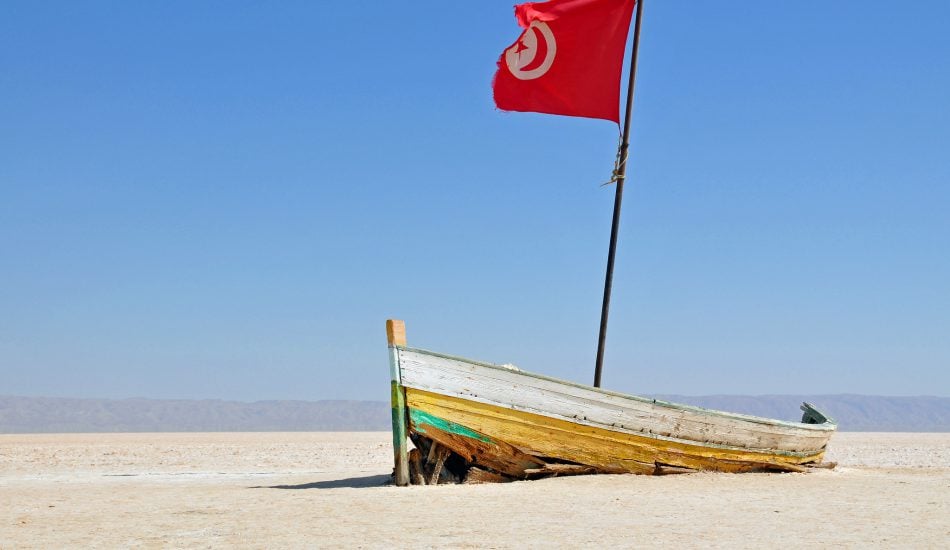
With below 500 m3/cap/yr, Tunisia is facing a serious water deficiency. Groundwater extraction often exceeds natural recharge, resulting in a progressive decline of the groundwater table and a deterioration of the water quality. The situation is expected to worsen due to population growth and urbanization as well as the effect of climate change on the availability and variability of water resources. With two thirds of the population already living in urban areas on the coast, it is expected that the water demands of this population will be partly satisfied by interregional and desalination measures.[1]
Overall conclusion with summary of positive and negative developments
Ensuring sufficient water supply has been based largely on the mobilization of water and the development of a reliable supply rather than water demand management and efficient water use. Efforts have been mainly focused on the following actions and measures:
Regulatory aspects: The government has introduced water sector legislation to develop measures to improve surface and groundwater resource management and water use management. The Water Code adopted in 1975 was recently revised to reflect the actual social and economic situation in the country.
Technical aspects: The government has initiated a wide range of ambitious programmes and technical measures to improve water supply and management, including improved water efficiency and the control or reallocation of water consumption. In many cases, technology adoption is limited by inadequate financial resources and knowledge.
Institutional aspects: Efforts have been made to strengthen and build local institutions to ensure the implementation of the government’s water conservation programme and to help these institutions to operate and maintain their water distribution facilities. As part of this, attempts have been made to involve end users in defining sustainable water management policy and strategy.
Water research strategy: Research and technology development in the water sector is considered essential for the rational and sustainable management and exploitation of water resources. A particular effort has been made to identify research topics related to water resource assessment and use of available water, management of water resources mostly for agriculture, and the development of hydro-agricultural models and cropping systems for optimal use of water resources.
Projected status of water resources in 2050
The government has evaluated its water strategy and concluded that supply could meet and eventually exceed demand if the total water resources are mobilized along with the use of unconventional water resources, improvement of water resources management, water pollution control, efficient and economic use of water in agriculture, cost recovery and capacity building around the economic water policy.[2] In this regard, the Ministry of Agriculture, Water Resources and Fisheries is currently preparing a new water sector strategy that will establish the direction and targets of the water policy to 2050. The document focuses on water demand and supply forecasting and the assessment of innovative approaches to significantly improve water planning and management within the context of the overall water resource strategy.[3]
Outline of long-term strategy
The aim of Tunisia’s 2050 water strategy is to better utilize water resources knowledge and improve the enabling environment for more effective water mobilization, including blue water, green water and grey water, and efficient water use. Specifically, the strategy aims to (i) preserve and optimize the available blue water (surface and groundwater), which amounts to 4,800 MCM/yr and represents a seventh of the total amount of the rainfall received across the country, through rainwater harvesting and supplemental irrigation; (ii) maximize opportunities for green water resources, which are estimated at about 23 BCM/yr, in conjunction with technical efficiency.
The vision of the 2050 water strategy is underpinned by six focal areas: (1) the preservation of the north water tower resources through adequate hydraulic works; (2) rehabilitation of water infrastructure in relation to domestic and irrigation systems; (3) more attention for rainfed agriculture in terms of incentives, restructuring and scientific support; (4) additional focus on artificial aquifer recharge, enhanced recharge and water banking; (5) exploration and development of technologies across the water sector, particularly in the areas of artificial aquifer recharge, wastewater treatment and desalination; and (6) optimal system management and water use efficiency for irrigation and domestic use.[4] [5]
[1] Ministry of Agriculture, Water Resources and Fisheries, 2017. Rapport National du Secteur de l’Eau.
[2] ITES, 2019. Tunisie: Eau 2050.
[3] Ibid.
[4] Horchani A, 2007. Water in Tunisia: A national perspective. Agricultural Water Management: Proceedings of a Workshop in Tunisia.
[5] Treyer S, 2002. Analyse des Strategies et Prospectives de l’Eau en Tunisie.
